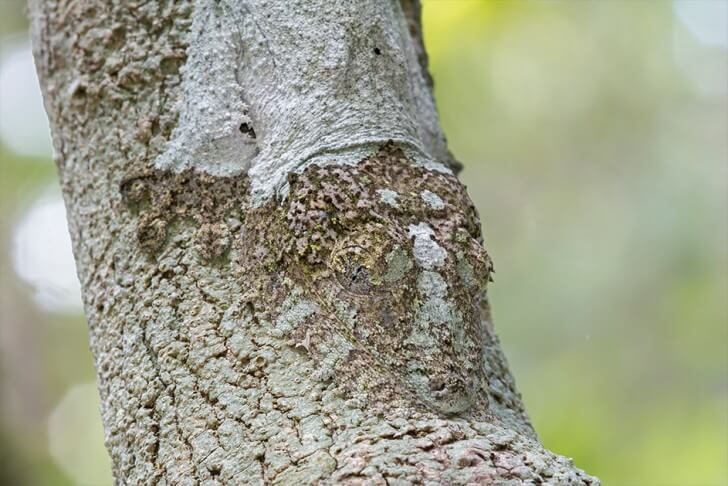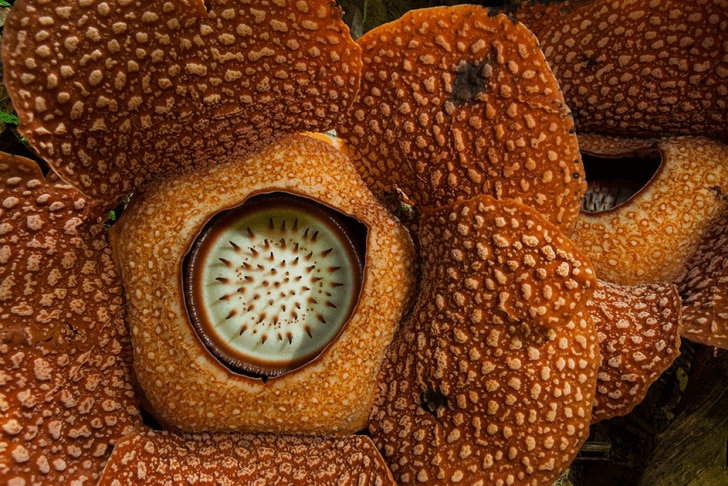BBC Earth newsletter
BBC Earth delivered direct to your inbox
Sign up to receive news, updates and exclusives from BBC Earth and related content from BBC Studios by email.
Landscapes
Not too hot. Not too cold. Just right.
The best way to describe Goldilocks’ porridge, but also a great way to sum up one of our planet’s prime habitats – the jungle.
Jungles are the ultimate sweet spot with an ideal balance of nutrients and water combined with the perfect climate for life to flourish.
Given these perfect ingredients, getting by in this paradise should be a comfortable affair, but the reality is that even Goldilocks herself would have had her work cut out. Conditions are so good that everyone wants a piece of the action, making this Eden incredibly congested. Every available nook and cranny suffocates with life, meaning many species resort to remarkable tactics to claim their share of the perfect porridge.
Consider the exploding ants (Camponotus saundersi) of Borneo who have developed a mind-blowing way of defending their patch. To ward off an attack, for instance by a larger weaver ant, exploding ants can take one for the team in a dramatic fashion. An exploding ant’s body contains a large glue-filled gland. When threatened, it can contract its abdomen so hard that it bursts, spewing its adhesive innards all over nearby attackers and rendering them immobile. Even more unpleasant, this defensive gland-glue is primed with a corrosive chemical cocktail.

Chemical warfare is a common defence strategy in the jungle. The golden poison dart frog (Phyllobates terribilis), takes the prize for being the most poisonous animal in the world. In the rainforests of Columbia, these brightly coloured amphibians might look like a tasty snack. The frogs secrete a poison called batrachotoxin which can cause paralysis if you’re lucky and death if you’re not.
The golden poison dart frog can ooze enough toxin from its skin to kill 22,000 mice, or perhaps even three bears. In any normal habitat this would earn the poison dart frog a free pass. But jungle competition is so fierce that one creature has adapted specially to eat, you guessed it, poison dart frogs. A water snake (Liophis epinephelus) is the only animal known to have developed a resistance to the dart frog’s toxins (apart from the frog itself). This gives them a remarkable advantage over other predators in the area, tapping into a food source that no one else can eat.
Finding a meal that won’t jump off the plate and kill you is a problem that Goldilocks never had to face, but many jungle animals deal with just that on a daily basis. A species of jumping spider (Cosmophasis bitaeniata) from Australia and New Guinea feeds on ant larvae hidden within the colony’s nest. Of course the spider is not presented with a self-service buffet, this canteen is heavily guarded by the ants. But the jumping spider has a secret weapon. It smells. To be precise, it smells of ant. By mimicking the scent of the colony the spider can stroll right in without being noticed – the ants’ eyesight is not particularly good - and pluck the tasty larvae straight from the workers’ mandibles. The ants assume they’ve just passed their brood safely across to another member of the colony, and not to a voracious mimic.
Hiding in plain sight is a wonderful way to look for lunch, but also a great way to avoid becoming it. With so many jungle mouths to feed, many species use camouflage to hide from predators. So much so that despite jungles being full of animal life, when you actually stand in one it can be surprisingly hard to spot any creatures at all. In this habitat of deceit, hide and seek is the name of the game. A group of nocturnal grasshopper-like insects, called katydids, have taken the idea of hiding in the leaves and run with it. They come in all manner of leaf-like disguises – green leaves, dead leaves, half-eaten leaves, decaying leaves with tattered edges, leaves covered in bird droppings. Some have even learnt to orientate their leafy bodies in the same direction as the surrounding foliage to better blend in to the plants they’re sitting on.

Of all the cryptic critters in the jungle, the leaf-tailed geckos of Madagascar are perhaps the finest. Not only do their markings perfectly resemble tree bark, but they can even disguise their own shadows. A skirt of frilly skin runs around their body margin, so when they press themselves against a tree the fringe blurs their outline, making an invisible join between body and branch.

Since the vast majority of jungle species are plants, it makes sense to try to look like one. The competition between plants themselves is pretty fierce too, with giant arboreal skyscrapers shadowing smaller shrubs that battle for access to the sun’s rays. Some plants have done away with the need for sunlight altogether. In the jungles of Indonesia and Malaysia, the corpse flower (Rafflesia arnoldii) lacks any chlorophyll – the green stuff that most plants use to make their own solar-powered food. That makes this species 100% dependant on others for nutrition. It actually spends most of its life living inside the roots of a host plant, but when it comes out, it does so in style – the corpse flower is the largest flower in the world, measuring over 1 metre across and over 11kgs in weight. As its name might suggest, it smells pretty bad too, using the stench of rotten meat to attract clouds of pollinating flies.
So is the jungle really “just right”, the perfect paradise? Well, maybe not for Goldilocks, the naïve or the unprepared. But for those who have found ways to make the most of the available bounty, this habitat is an evolutionary battleground full of opportunity for life to thrive in all its ingenious wonder.
Featured image © BBC 2016
Article was originally published in April 2017.